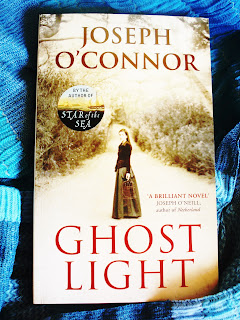The characters are so warm and real, the whole premise so dream-like. Set in the 1920s when two strangers meet in a woman's club on a rainy afternoon and decide to rent a medieval castle in Italy. There they bring together a collection of characters (for two more ladies must join them to reduce costs, and some servants etc.) each with their own set of worries and anxieties.
Lotty is uncertain in here dreary London life - fearful of speaking her mind to her husband, ignored by their social set. On arrival in Italy she finds certainty, confidence, and inspires those around her. Rose, is a very respectable woman whose charity work with 'the poor' keeps her busy and helps her forget her broken-down relationship with her husband. The effect that San Salvatore has on her is equally momentous. She begins to allow herself to feel again, to remember what it is to love and be loved. Rose begins to bloom! In London Lotty tells her that they have been so very good for so very long - you can see it on their tired faces - that it is no wonder they are exhausted and need a holiday.
Then there are the other ladies who come to stay. They too are similarly transformed. Mrs Fisher, who in England is surrounded by photos of famous dead authors, comes to appreciate those who are still living, and comes to life herself. (Her beloved 'stick' is suddenly made redundant). Finally, Lady Caroline Dester, the spoilt, cold but beautiful socialite, once under the Italian sun, learns to appreciate friendship, say thank you and to think of others.
But these miraculous changes are a slow-blooming, rather than a sudden one and, like the dawning of Spring, act as a renewal or rebirth. Happiness is contagious with this novel and even the reader begins glow in a reflected joy.
Philosophically, this novel is about finding happiness within. Once the characters decide to be happy, to follow Lotty's vision, they become happy. Yet, I believe that Von Arnim was asking the reader to consider if we really need to travel to Italy (or anywhere) to learn to be happy? I think that this what the novel is all about and explains why it is such a feel good read. Happiness is within - we ultimately make ourselves happy. Lotty's husband is possibly still a 'cold fish' of a man by the end of the text, but the difference is that she does not SEE him as such.
The Italian landscape is described in glorious detail; the flowers are almost characters in themselves, mirroring the dazzling flowering and blooming of the women. We see each woman surround herself with the part of the landscape that most reflects her character: the old battle-axe, Mrs Fisher, keeps to the castle battlements, like some sleeping beauty in her tower, half dead, waiting for a kiss to re-awaken her. The dreaming Lotty takes to the hills to fill her mind with lofty ideas. Rose, barren and bereft after the death of her child and the loss of her estranged husband, sits among the hard, grey stones, longing for someone to hold. And then there is Lady Caroline, the beautiful, blooming girl, who sits with her feet in the lilies, a flower amongst the flowers. They each become part of the Italian landscape itself.
Von Arnim's writing style is very much in the Jane Austen vein. It may appear that very little is happening, but an observant reader will see that there is much going on between the lines. There are many subtleties and subtexts that are so much a part of how woman communicate. It is simply delicious to observe. And although I think this is a great book for women, I feel that men should enjoy it too.
'The Enchanted April' is pure escapism to be sure, yet there is something quite interesting about this book, especially what is says about relationships, happiness and love. I know I will return to it again and again. This is a great read, a real jewel of a book, and the perfect present for all your book-loving, chocolate-eating girl friends, who long to escape on a rainy afternoon.









